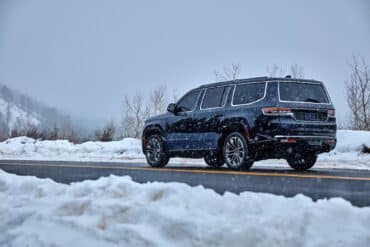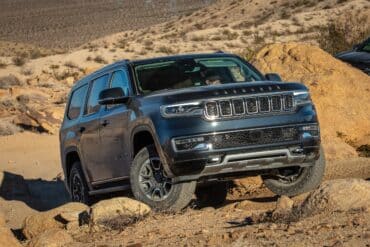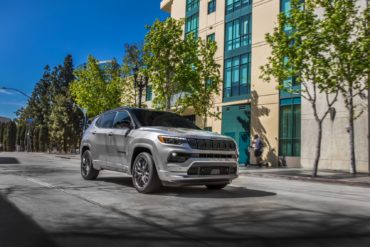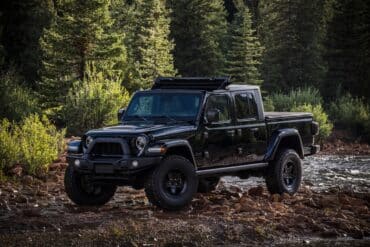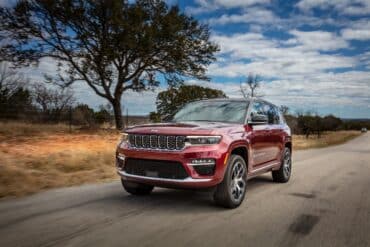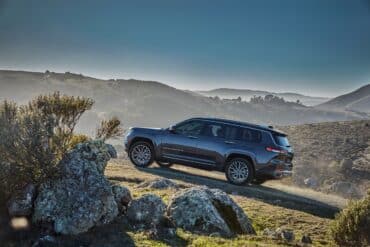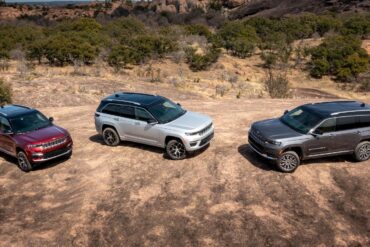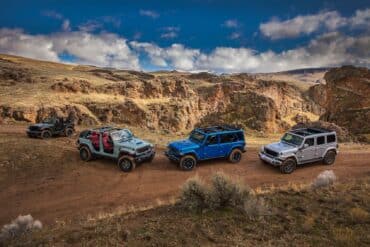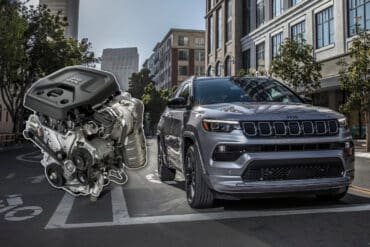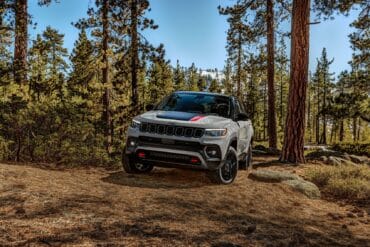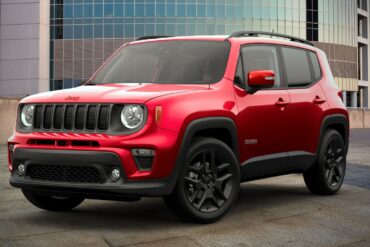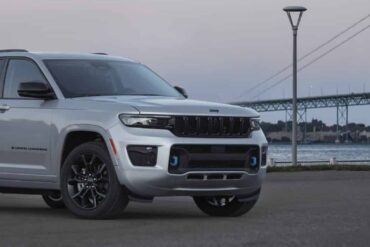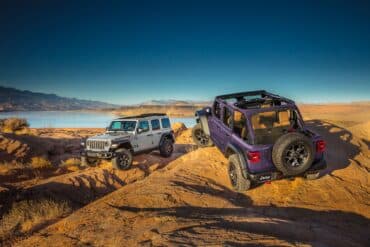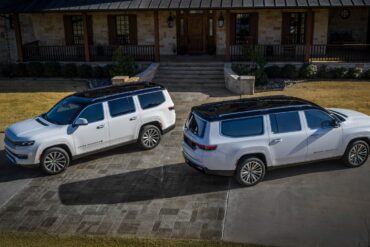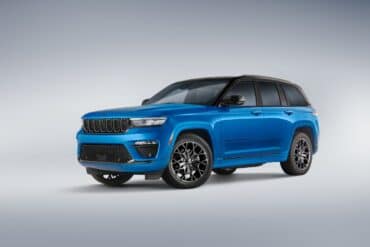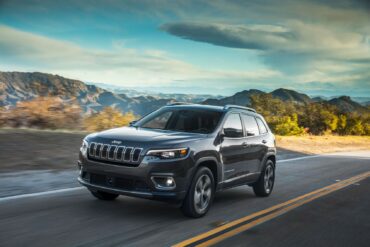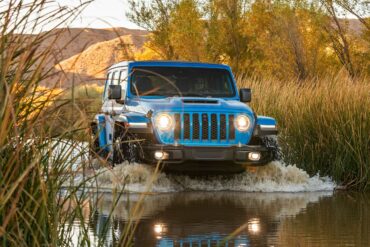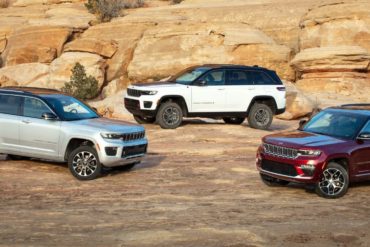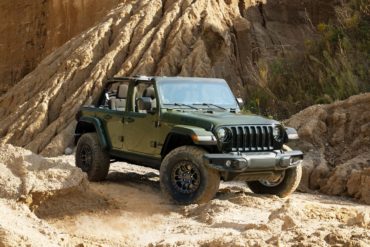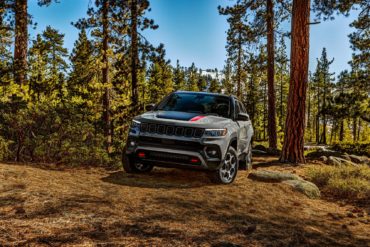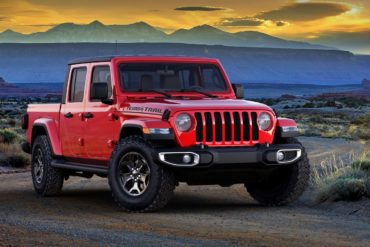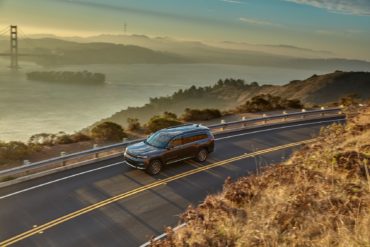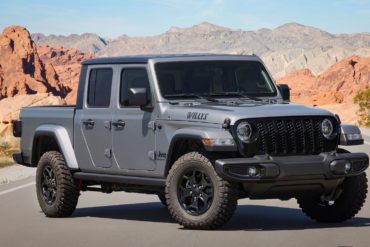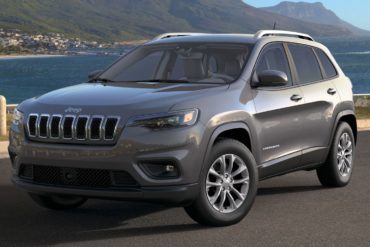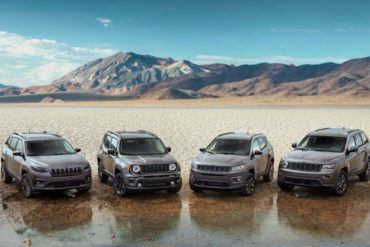The 2024 Jeep Grand Wagoneer is a more luxurious version of the Wagoneer with three-row seating for up to eight.
Jeep

In terms of legendary American namesakes, it’s hard to top Jeep. With a rich history and an unmatched off-road prowess, Jeep enthusiasts have embraced the brand for more than 75 years.
Today, the lineup consists of the Cherokee, Compass, Gladiator, Grand Cherokee, Renegade, and Wrangler. To meet consumer demand around the world, all Jeep models sold outside North America are available in both left- and right-hand drive configurations.
Every Jeep has a seven-slot grille, with each slot representing one of the Earth’s seven continents.
The 2024 Jeep Wagoneer enters the hotly-contested three-row SUV segment, competing with the Chevy Tahoe, Nissan Armada, and Ford Expedition.
The 2024 Jeep Compass sees a few changes for the new model year. It underwent a styling update for the...
The 2024 Jeep Gladiator improves upon the strengths of the outgoing variant while receiving a host of updated technology, safety...
The 2024 Jeep Grand Cherokee 4xe is a plug-in hybrid with high efficiency, SUV practicality, and all-terrain capabilities. If not...
The 2024 Jeep Grand Cherokee L arrived as a part of the fifth-generation Grand Cherokee in 2021. The “L” monicker...
The 2024 Jeep Grand Cherokee will start rolling into U.S. dealerships in early 2024, virtually unchanged except for some new...
The 2024 Jeep Wrangler will enter the scene with a boatload of updates under its redesigned façade. The 2024 Wrangler...
The Jeep Compass will enter 2023 with more than the “mid-cycle facelift” it got for the 2022 model year. The...
The 2023 Jeep Compass is entering the new year with a new engine, transmission, and driveline to improve performance. Jeep...
The 2023 Jeep Renegade is a senior member of the small SUV category. The first-gen Jeep Renegade came to market...
The 2023 Jeep Grand Cherokee 4xe 30th Anniversary Edition is the brand’s tribute to the first-gen ZJ variant that came...
The 2023 Jeep Wrangler is the epitome of an off-roading icon and is endlessly customizable for any lifestyle. Jeep and...
We were privy that Jeep’s been working on extended-wheelbase versions of its revitalized Wagoneer and Grand Wagoneer that debuted at...
A new High Altitude Package is coming for the Jeep Grand Cherokee Summit 4xe and Summit Reserve 4xe. Available for...
The 2022 Jeep Gladiator is a more flexible and practical version of the Jeep Wrangler. It’s typically a Wrangler from...
What’s with all those ducks on all those Jeeps? Maybe you have been “ducked” yourself, or perhaps you have a...
The 2022 Jeep Cherokee remains part of the KL model unveiled in 2014. Although the current Cherokee is riding on...
The 2022 Jeep Wrangler needs no introduction. We regard the original Jeep CJ-7 as the world’s first-ever 4×4 SUV, and...
The 2022 Jeep Grand Cherokee remains a sterling choice for a midsize family SUV. Not to be confused with the...
Meet the 2022 Jeep Wrangler Willys with the Xtreme Recon package! The new package will be available for both the...
Jeep Performance Parts and Mopar are making available new half doors for the 2021 Jeep Gladiator. The half doors and...
The 2022 Jeep Compass is arriving with a plethora of welcome updates inside and out. Jeep is also introducing a...
The 2022 Jeep Compass is soldiering on as a more rugged and off-road capable alternative to popular crossovers like the...
Everything is bigger in Texas, and the popularity of trucks is no exception. The 2021 Jeep Gladiator Texas Trail edition...
Jeep is introducing the fifth-generation Grand Cherokee with an all-new L model with three rows of seats. You can still...
Jeep fans have been clamoring for a V8-powered Wrangler for as long as I can remember. The last Jeep to...
In August, Jeep pulled the cover off the Gladiator Farout Concept and won a boatload of cool points for doing so. However,...
The 2021 Jeep Cherokee Latitude LUX ramps up the automaker’s offerings in the red-hot midsize SUV segment with the LUXury...
Jeep is pulling out all the stops to celebrate the 80th anniversary of its brand. Highlights include special edition models...

